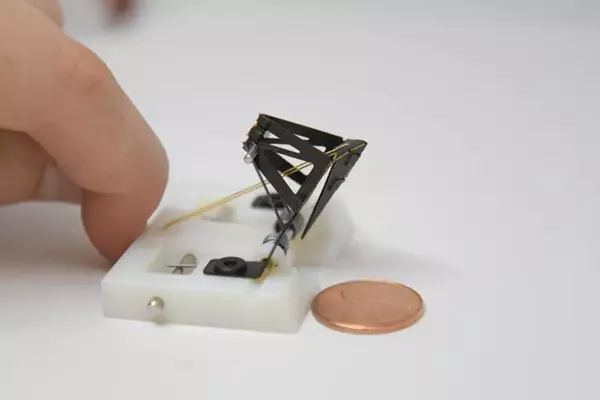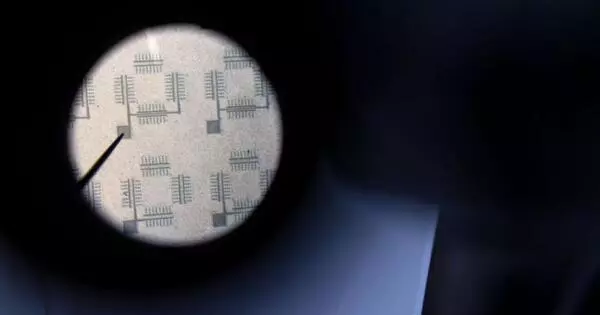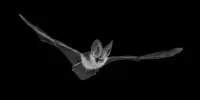Researchers created a single-material, single-stimulus microstructure that can outmaneuver even living cilia. These programmable, micron-scale structures could be used for a variety of applications, including soft robotics, biocompatible medical devices, and even dynamic information encryption.
For years, scientists have been attempting to engineer tiny, artificial cilia for miniature robotic systems capable of performing complex motions such as bending, twisting, and reversing. Building these smaller-than-a-human-hair microstructures typically requires multi-step fabrication processes and varying stimuli to create the complex movements, limiting their wide-scale applications.
Now, researchers from the Harvard John A. Paulson School of Engineering and Applied Sciences (SEAS) have developed a single-material, single-stimuli microstructure that can outmaneuver even living cilia. These programmable, micron-scale structures could be used for a range of applications, including soft robotics, biocompatible medical devices, and even dynamic information encryption.
The research is published in Nature.
We demonstrated that we can program the choreography of this dynamic dance by tailoring a variety of parameters such as illumination angle, light intensity, molecular alignment, microstructure geometry, temperature, and irradiation intervals and duration.
Michael M. Lerch
“Innovations in adaptive self-regulated materials capable of a diverse set of programmed motions represent a very active field that is being tackled by interdisciplinary teams of scientists and engineers,” said Joanna Aizenberg, Amy Smith Berylson Professor of Materials Science and Professor of Chemistry & Chemical Biology at SEAS and the paper’s senior author. “Advances in this field may have a significant impact on how we design materials and devices for a wide range of applications, including robotics, medicine, and information technology.”
In contrast to previous research, which relied primarily on complex multi-component materials to achieve programmable movement of reconfigurable structural elements, Aizenberg and her colleagues created a microstructure pillar out of a single material: a photoresponsive liquid crystal elastomer. Because of the way the liquid crystal elastomer’s fundamental building blocks are aligned, when light strikes the microstructure, those building blocks realign and the structure changes shape.

Two things happen as the shape changes. First, the area where the light strikes becomes transparent, allowing the light to penetrate deeper into the material and cause further deformations. Second, as the material deforms and the shape shifts, a new area of the pillar is exposed to light, causing that area to change shape as well.
This feedback loop propels the microstructure into a stroke-like cycle of motion.
“This internal and external feedback loop gives us a self-regulating material. Once you turn the light on, it does all its own work,” said Shucong Li, a graduate student in the Department of Chemistry and Chemical Biology at Harvard and co-first author of the paper.
When the light turns off, the material snaps back to its original shape.
The specific twists and motions of the material change with its shape, making these simple structures infinitely reconfigurable and tunable. The researchers demonstrated the movements of round, square, L- and T-shaped, and palm-tree-shaped structures using a model and experiments, and laid out all the other ways the material can be tuned.
“We demonstrated that we can program the choreography of this dynamic dance by tailoring a variety of parameters such as illumination angle, light intensity, molecular alignment, microstructure geometry, temperature, and irradiation intervals and duration,” said Michael M. Lerch, co-first author of the paper and a postdoctoral fellow in the Aizenberg Lab.
The research team also demonstrated how these pillars interact with each other as part of an array to add another layer of complexity and functionality.
“When these pillars are grouped together, they interact in very complex ways,” Li explained. “This is because each deforming pillar casts a shadow on its neighbor, which changes throughout the deformation process. Programming how these shadow-mediated self-exposures change and interact with one another dynamically could be useful for applications such as dynamic information encryption.”
“The vast design space for individual and collective motions is potentially transformative for soft robotics, micro-walkers, sensors, and robust information encryption systems,” said Aizenberg.
















